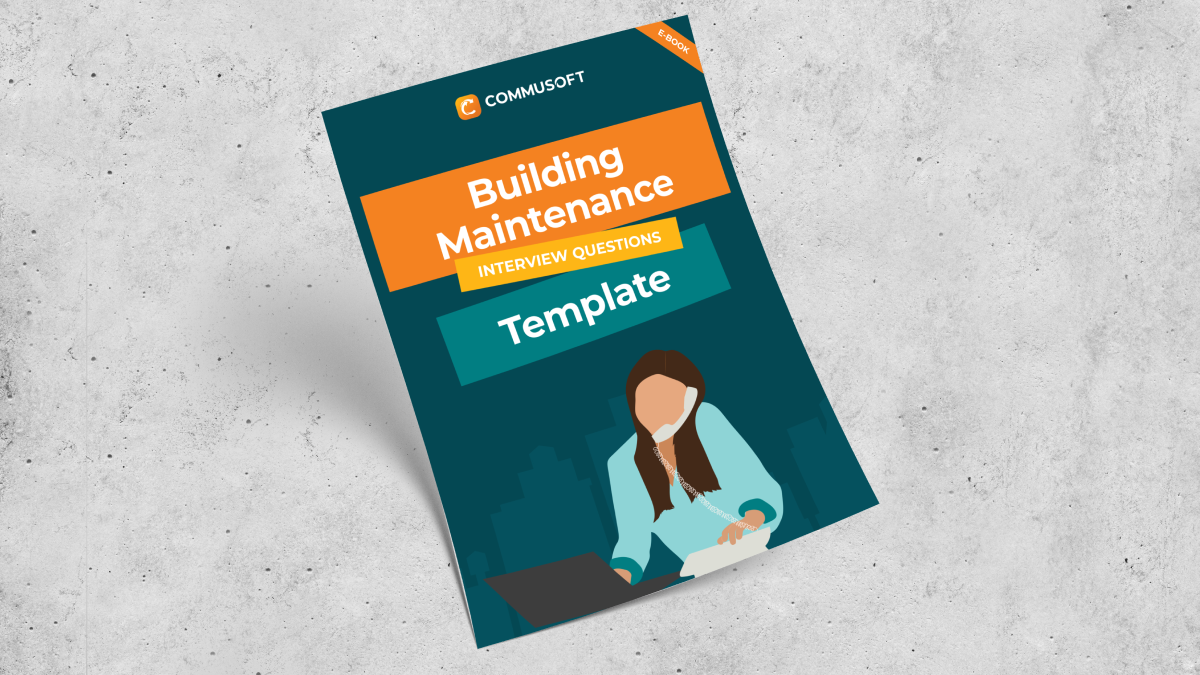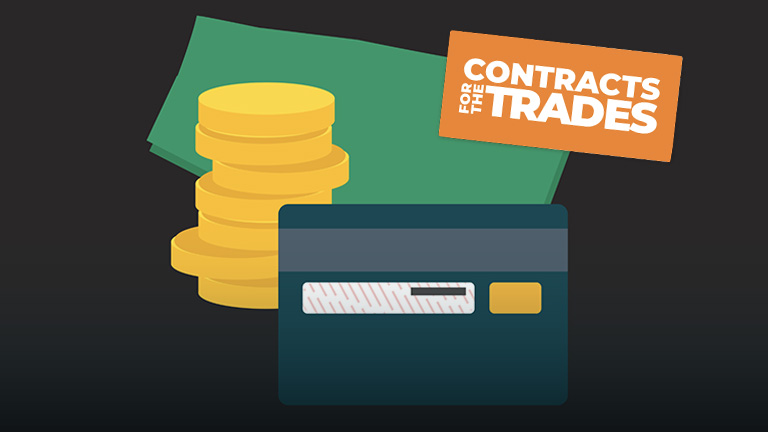Contractor Pricing Guide to Run a Profitable Business
February 22, 2022 | Read: 10 minutes

We’ve all struggled to figure out how to price services, especially when they need to change every year.
Whether you’re running a plumbing company, working as an electrical contractor, an HVAC specialist, or any other field service, you want to price for profit.
But why’s it so challenging?
Pricing for profit isn’t as common as you might think.
Most managers choose to squeeze their profits to compete on price, but there are better ideas than making it a fight to the bottom.
Don’t underestimate your customers either, most people you work with will understand that you get what you pay for, so it’s important to understand value…

Why is Contractor Pricing Important?
As we all know, businesses need to generate revenue and grow their client base to stay open. That’s where contracting pricing and finding the right price for your services comes into play.
Finding the perfect price point is important because it:
- Helps you calculate and determine your profitability
- Infunces your competitiveness in a crowded market
- Improves overall business health and performance
- Gets you fairly compensated for the hard work completed
Five Common Challenges Contractors Face When Pricing Services
Navigating the pricing landscape comes with its own set of challenges.
Understanding and addressing these challenges is key to setting up a successful pricing strategy.
Challenge #1 – Underestimating Overhead Costs
One common pitfall is underestimating overhead costs.
Beyond direct project expenses, overhead includes administrative costs, utilities, insurance, and other fixed expenses. Failing to account for these can lead to pricing that falls short of covering all necessary expenditures.
Challenge #2 – Undercutting and Competition
In a competitive market, the temptation to undercut prices to secure projects is high. However, this strategy can make a real dent in profits and compromise the sustainability of your business in the long run.
Challenge #3 – Lack of Confidence in Value
If you or your technicians are unconfident when it comes to the business or work being done – the customers will be able to see it – and it’ll reflect in your online reviews.
Sending the wrong message to clients is a quick way to lose them.
Challenge #4 – Inefficient Project Management
Consistent poor project management can result in additional costs and delays, impacting your overall profitability and team morale.
If your services take longer and cost more than the competitor’s, you’ll have a tough time with retention and repeat business.
Challenge #5 – Negotiation Anxiety
Negotiation is a standard part of the contracting business, only you know your break-even point. Anxiety about negotiation can lead to compromises that negatively affect your bottom line.
Developing negotiation skills is a must for maintaining fair and worthwhile field service maintenance contracts.
Understanding What Profitable Pricing Looks Like
As a field service manager, you need to make sure that your price of service covers all your costs.
This will give you some flexibility when it comes to paying your own vendors and bills while leaving enough to reinvest in growing the business.
These tips will help you charge your customers the right amount for every job, whether we’re talking about a simple AC unit installation or a complex, multi-stage commercial project.
Your Overhead Costs
Get out a piece of paper and start listing out your expenses…all of them. You’ll realize there’s more than a lot to write down – but it’s the first step in understanding how to price your services.
This exercise requires that you gather your receipts, access your credit card statements, or contact your accountant and have them provide you with a spreadsheet and figure.
However you gather the information, calculate your overhead costs meticulously, and encompass everything from office space and utilities to insurance and taxes.
Understanding your costs is the foundation for establishing a sustainable pricing model.
Calculating an Accurate Hourly Rate
Your hourly rate is a critical component in determining the profitability of your services. When preparing to calculate your hourly rate, consider both direct and indirect costs.
Direct costs include:
- Resources and materials.
- Subcontractor fees.
- Other expenses directly related to specific projects.
Indirect costs include:
- Any overhead costs.
- Desired profit margin.
- Total estimated annual billable hours.
To calculate your hourly rate, divide your total annual costs (direct and indirect) by the estimated annual billable hours. This rate should not only cover your costs but also provide a reasonable profit margin.
Regularly review and adjust your hourly rate to account for changes in overhead or inflation, ensuring that it remains reflective of your business’s financial needs.
Different Types of Project Costs
Recognizing and categorizing the various costs associated with different project types is required for setting accurate prices.
Direct costs for a larger project, for instance, may include materials, labor, equipment, and permits.
On the other hand, indirect costs would cover overhead, insurance, and administrative expenses.
By distinguishing between these costs, you can tailor your pricing strategy to the specific requirements of each project, preventing underpricing or overpricing and ensuring profitability across diverse types of contracts.
Researching Local Rates
Understanding the local market rates for your services is crucial for positioning your pricing competitively.
Conduct thorough research to identify industry standards and the price range within your geographical area.
Consider factors such as the level of expertise, quality of service, and unique value propositions when comparing your rates to those of competitors.
By aligning your pricing with local expectations, you can show that you’re fighting for a customer’s business while maintaining profitability.
Competitor Analysis
If you don’t think you can beat the competition, then there’s no point in running a service business!
Analyzing your competitors’ pricing strategies provides valuable insights into market dynamics and helps you identify opportunities or gaps in your own pricing.
Consider factors such as service offerings, quality, and additional value provided by competitors. When strategically positioning your pricing relative to other businesses around you, attracting clients at the right value becomes natural.
Tailoring Prices to Your Target Market
It’s essential to understand your target market’s demographics, preferences, budget constraints, and expectations when setting prices that resonate with the target audience or potential clients.
For example, high-end clients may be willing to pay a premium for exclusive services or contracts, while cost-conscious clients may prioritize affordability.
Regardless of where you operate, by tailoring your prices to your target market you can increase the chances of bringing in and retaining clients.
But now that you understand your costs and clients, you’ll need to decide on figures and a pricing model.
Choosing the Right Pricing Model & Pricing Your Services
Financial success is one of the most obvious indicators of an impactful maintenance business and it starts with how you price your services.
Hourly Rates
Your hourly rates should be straightforward and provide a clear understanding of your time’s value.
Calculating them by dividing total annual costs by estimated annual billable hours. On top of that, factor in competitor rates and adjust yours based on experience, expertise, and target market.
Project-Based Pricing
Project-based pricing offers predictability for both you and the client. If they can clearly see what they get for the price they pay, there’s less room for disputes.
If you can accurately estimate costs and factor in contingencies, its easy to avoid unforeseen challenges affecting profitability.
Maintenance Agreements or Contracts
If you have the client base and the means to honor them – offering a field service maintenance agreement can give your business a powerful stream of recurring revenue.
Learning how to set up a maintenance contracts program properly can be a challenge. If you want to learn more, get started with our free guide, The Essentials of Field Service Maintenance Agreements.
Learning How to Quantify Your Value
Quantifying the value you bring to clients is usually necessary when justifying premium pricing.
By effectively communicating your expertise, experience, and unique benefits, you can bring to light the advantages clients gain from choosing your services.
Tip: One quick way to do this is by showcasing past project successes and testimonials to build trust.
Maintaining Your Contracting Business Profitability
Sustaining profitability in your contracting business requires strategic thinking, KPI tracking to hold your business accountable, and a commitment to long-term success.
Tracking and Monitoring Costs:
To maintain profitability, it’s crucial to monitor every cost your business takes on. This can be made easy by utilizing software that integrates with your accounting systems to track and record expenses and resource utilization.
You’ll have to regularly review these metrics to identify trends and potential areas for improvement but having real-time data at your disposal allows you to make informed decisions about pricing adjustments.
Avoiding Discount Traps:
While it may be tempting to offer frequent discounts or undercut competitors for short-term gains, it can jeopardize long-term profitability.
There are many alternative strategies for attracting clients, like referral programs and specialized services.
For a real-life case study and proof that discounts aren’t everything – check out this informative story from the Harvard Business Review.
Long-Term Vision:
Investing in skilled labor and the best equipment or tools can optimize your processes and increase technician efficiency. This allows you to justify higher pricing based on increased capabilities.
The longer your business is around, the stronger your brand and reputation will become. If you consistently provide quality work and keep customers happy, you’ll be in a position to demand premium rates.
Maximize Your Productivity Through Technology
Whether you’re working with clients that are commercial, residential, or both – utilizing new technologies or software can boost your businesses productivity and make you an expert when navigating customer management.
It’s especially important to make use of invoice management software; ater all, once you set your prices, you want to be sure that you’re not only billing customers correctly, but efficiently.
With standard invoice templates helping reduce admin effort, combined with software, you can rest assured that your plumbing, electrical, or facilities maintenance business is processing invoices with ease and money is never getting lost.
Start Running a More Profitable Contracting Business
Implement the insights gained from this Contractor Pricing Guide to establish a robust pricing strategy that not only sustains your business but propels it toward increased profitability.
By addressing common challenges, understanding the components of profitable pricing, and choosing the right pricing model – you can build a foundation for long-term success in the field service industry.

Anthony Vattimo
Thanks for checking out the Commusoft blog - I’ve been helping business owners improve their strategies for a few years now, so I hope you were able to take something away from the content I’ve written. Feel free to continue exploring the blog - or reach out to us with any questions!








